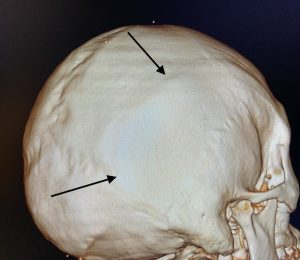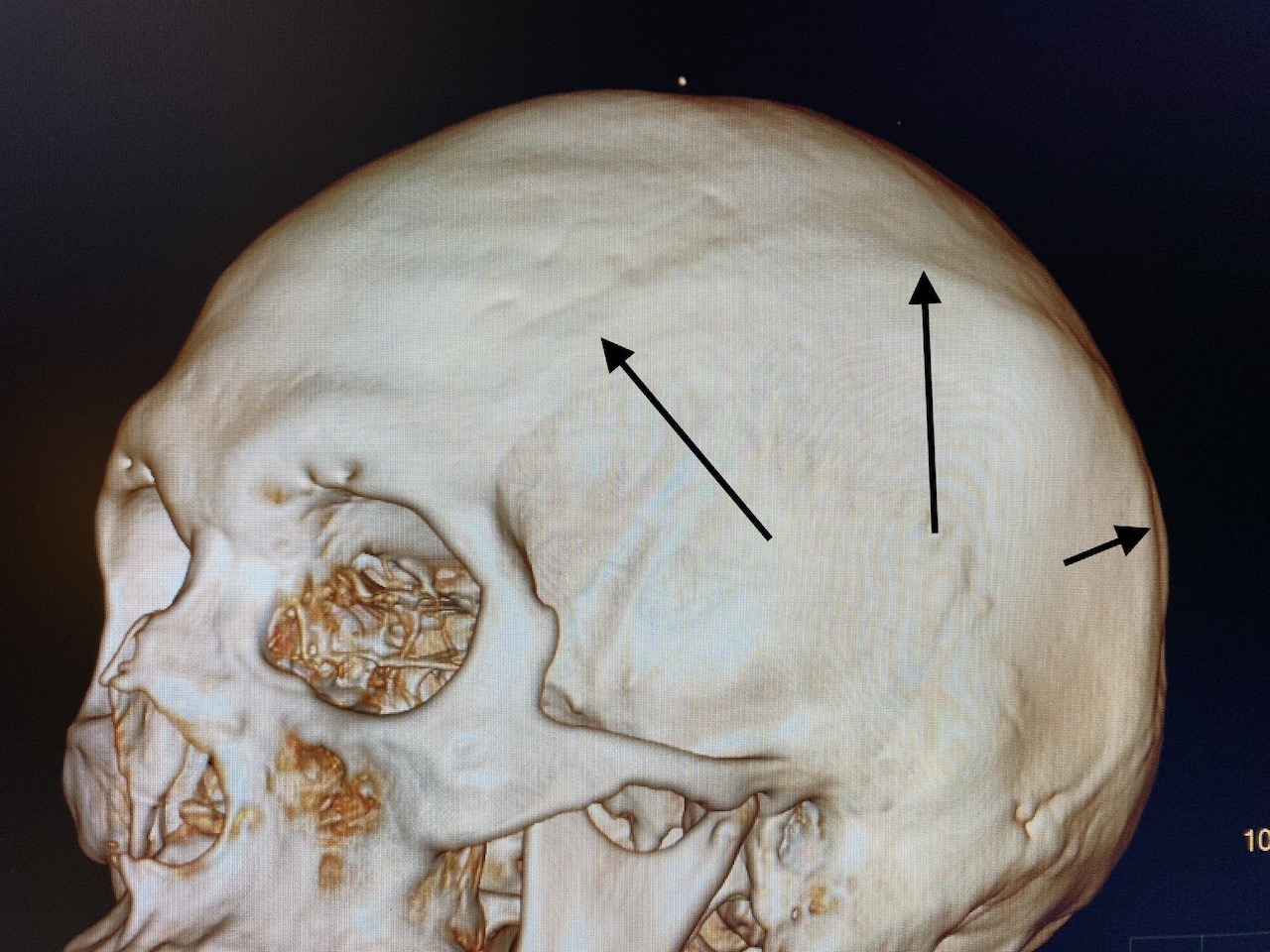


This head surface concept is important as many skull shape manipulations involve more than just one surface. This is particularly relevant in skull augmentations. Since the skull is a series of connected convex surfaces augmentations cover a lot more surface area than is often realized to blend in and look natural. As a result most skull augmentations cover or encroach on at least three surfaces. The back of the head skull augmentation, for example, covers the bak and wraps around a bit onto the sides and sometimes the top of the head. Most forehead augmentations does the same blending into the sides and top of the head. Since the sides of the head are soft tissue the augmentation must sit on top of the muscle and not done on the bone. This is why custom solid silicone skull implants are so effective as they can cover any type of skull surface. Bone cements in contrast must stay on bone and thus are much more limited in their skull augmentation capability.
A significant violation of this concept is when custom skull implants are made in which the surgeon believes that the implant must sit entirely on bone and needs to cross the temporal line to create its augmentation effects. Stripping off the muscle from the temporal line to place an implant creates a significant aesthetic problem after surgery as the released muscle contracts and creates a prominent bulge. Releasing and resuspending the temporalis muscle never works as the muscle merely contracts inferiorly. It is important to never strip off the muscle or fascia from the bony temporal line.
Dr. Barry Eppley
Indianapolis, Indiana





